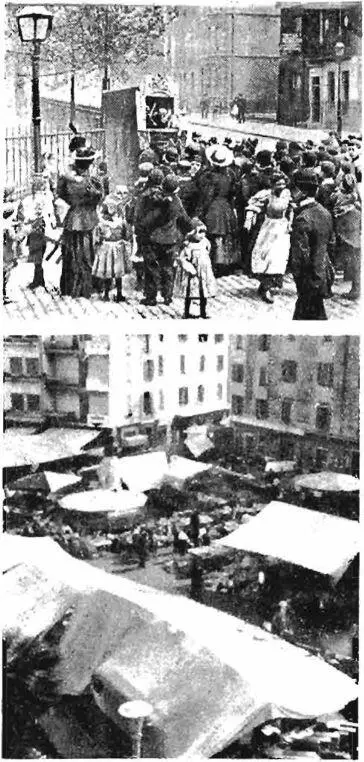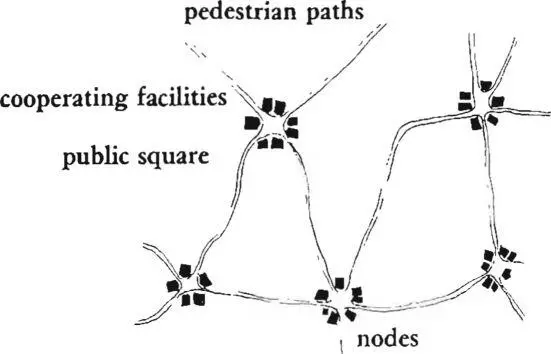Christopher alexander - A pattern language
Здесь есть возможность читать онлайн «Christopher alexander - A pattern language» весь текст электронной книги совершенно бесплатно (целиком полную версию без сокращений). В некоторых случаях можно слушать аудио, скачать через торрент в формате fb2 и присутствует краткое содержание. Жанр: Прочая научная литература, на английском языке. Описание произведения, (предисловие) а так же отзывы посетителей доступны на портале библиотеки ЛибКат.
- Название:A pattern language
- Автор:
- Жанр:
- Год:неизвестен
- ISBN:нет данных
- Рейтинг книги:3 / 5. Голосов: 1
-
Избранное:Добавить в избранное
- Отзывы:
-
Ваша оценка:
- 60
- 1
- 2
- 3
- 4
- 5
A pattern language: краткое содержание, описание и аннотация
Предлагаем к чтению аннотацию, описание, краткое содержание или предисловие (зависит от того, что написал сам автор книги «A pattern language»). Если вы не нашли необходимую информацию о книге — напишите в комментариях, мы постараемся отыскать её.
A pattern language — читать онлайн бесплатно полную книгу (весь текст) целиком
Ниже представлен текст книги, разбитый по страницам. Система сохранения места последней прочитанной страницы, позволяет с удобством читать онлайн бесплатно книгу «A pattern language», без необходимости каждый раз заново искать на чём Вы остановились. Поставьте закладку, и сможете в любой момент перейти на страницу, на которой закончили чтение.
Интервал:
Закладка:
Second, to keep the activity concentrated, it is essential to make the squares rather small, smaller than one might imagine. A square of about 45 X do feet can keep the normal pace of public life well concentrated. This figure is discussed in detail under SMALL PUBLIC SQUARE (6 I ) .
Third, the facilities grouped around any one node must be chosen for their symbiotic relationships. It is not enough merely to group communal functions in so-called community centers. For example, church, cinema, kindergarten, and police station are all community facilities, but they do not support one another mutually. Different people go to them, at different times, with different things in mind. There is no point in grouping them together. To create intensity of action, the facilities which are placed together round any one node must function in a cooperative manner, and must attract the same kinds of people, at the same times of day. For example, when evening entertainments are grouped together, the people who are having a night out can use any one of them, and the total concentration of action increases—see nightlife (33). When kindergartens and small parks and gardens are grouped together, young families with children may use either, so their total attraction is increased.
Fourth, these activity nodes should be distributed rather evenly
| 22. NINE PER CENT PARKING23. PARALLEL ROADS24. SACRED SITES | |
|---|---|
| 25 . | ACCESS TO WATER |
| 26 . | LIFE CYCLE |
| 27 . | MEN AND WOMEN |
both in the neighborhoods and the communities, and in between them, in the boundaries, encourage the formation of local centers;
| to00 | ECCENTRIC NUCLEUS |
| 29. | DENSITY RINGS |
| 30 * | ACTIVITY NODES |
| 3 i- | promenade |
| 32 - | SHOPPING STREET |
| 33 - | NIGHT LIFE |
| 34. INTERCHANGE |
around these centers, provide for the growth of housing in the form of clusters, based on face-to-face human
| groups; | |
| 35 . | HOUSEHOLD MIX |
| 36 . | DEGREES OF PUBLICNESS |
| 37 - | HOUSE CLUSTER |
| 38 .ROW HOUSES39 .HOUSING HILL40. OLD PEOPLE EVERYWHERE |
XXl
TOWNS
| across the community, so that no house or workplace is more than a few hundred yards from one. In this way a contrast of “busy and quiet” can be achieved at a small scale—and large dead areas can be avoided. |
|---|
 |
| Nodes of different size. |
There fore:
Create nodes of activity throughout the community, spread about 300 yards apart. First identify those existing spots in the community where action seems to concentrate itself. Then modify the layout of the paths in the community to bring as many of them through these spots as possible. This makes each spot function as a “node” in the
166

 |
| / |

path network. Then, at the center of each node, make a small public square, and surround it with a combination of community facilities and shops which are mutually supportive.
❖ *S*
Connect those centers which are most dense, with a wider, more important path for strolling— promenade(31); make special centers for night activities— night life(33) ; whenever new paths are built, make certain that they pass through the centers, so that they intensify the life still further— paths and goals(120); and differentiate the paths so they are wide near the centers and smaller away from them— degrees of publicness(36). At the heart of every center, build a small public square— small public squares(61), and surround each square with an appropriate mix of mutually self-reinforcing facilities—
WORK COMMUNITY(41), UNIVERSITY AS A MARKETPLACE(43), LOCAL TOWN HALL(44), HEALTH CENTER(47), BIRTH PLACES(65), TEENACE SOCIETY(84), SHOPFRONT SCHOOL(85), INDIVIDUALLY OWNED SHOPS(87), STREET CAFE(88), BEER HALL(90), FOOD STANDS(93). . . .
167
| 3 I PROMENADE** |
|---|
 |
| 168 |
. . . assume now that there is an urban area, subdivided into subcultures and communities each with its boundaries. Each subculture in the mosaic of subcultures(8), and each community of7000 (12) has a promenade as its backbone. And each promenade helps to form activity nodes(30) along its length, by generating the flow of people which the activity nodes need in order to survive.
*J* ‘h
Each subculture needs a center for its public life: a place where you can go to see people, and to be seen.
The promenade, “paseo,” “passegiata,” evening stroll, is common in the small towns of Italy, Spain, Mexico, Greece, Yugoslavia, Sicily, and South America. People go there to walk up and down, to meet their friends, to stare at strangers, and to let strangers stare at them.
Throughout history there have been places in the city where people who shared a set of values could go to get in touch with each other. These places have always been like street theaters: they invite people to watch others, to stroll and browse, and to loiter:
In Mexico, in any small town plaza every Thursday and Sunday night with the band playing and the weather mild, the boys walk this way, the girls walk that, around and around, and the mothers and fathers sit on iron-scrolled benches and watch. (Ray Bradbury, “The girls walk this way; the boys walk that way . . .” West , Los Angeles Times Sunday Magazine, April 5, 1970.)
In all these places the beauty of the promenade is simply this: people with a shared way of life gather together to rub shoulders and confirm their community.
Is the promenade in fact a purely Latin institution: 1Our experiments suggest that it is not. The fact is that the kinds of promenades where this strolling happens are not common in a city, and they are especially uncommon in a sprawling urban region. But experiments by Luis Racionero at the Department of
Architecture at the University of California, Berkeley, have shown that wherever the possibility of this public contact docs exist, people will seek it, as long as it is close enough. Racionero interviewed 37 people in several parts of San Francisco, living various distances from a promenade, and found that people who lived within 20 minutes used it, while people who lived more than 20 minutes away did not.
Читать дальшеИнтервал:
Закладка:
Похожие книги на «A pattern language»
Представляем Вашему вниманию похожие книги на «A pattern language» списком для выбора. Мы отобрали схожую по названию и смыслу литературу в надежде предоставить читателям больше вариантов отыскать новые, интересные, ещё непрочитанные произведения.
Обсуждение, отзывы о книге «A pattern language» и просто собственные мнения читателей. Оставьте ваши комментарии, напишите, что Вы думаете о произведении, его смысле или главных героях. Укажите что конкретно понравилось, а что нет, и почему Вы так считаете.












